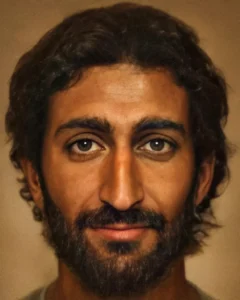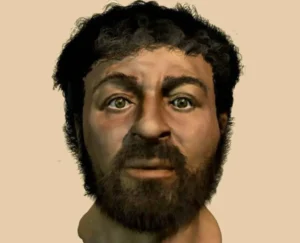For two millennia, scholars and historians have debated the appearance of Jesus Christ. Traditional portrayals depict Him as a tall, muscular European with long blond hair and blue eyes, but historical consensus suggests Jesus, born in Palestine, would have shared local traits: shorter stature and curly black hair.
Dutch digital artist Bas Uterwijk used advanced AI technology to create a “historically accurate” portrait of Jesus, challenging traditional depictions. Uterwijk’s work, using neural networks and Artbreeder, blends various historical representations, focusing on a Middle-Eastern appearance.

His image, while artistically compelling, doesn’t claim to be an exact likeness but aims to offer a more culturally authentic interpretation.
The debate over Jesus’s appearance isn’t new, with discussions resurfacing in recent years. Historical context suggests darker skin, short black hair, and brown eyes, aligning with the people of Judea and Egypt of that era.

Joan Taylor, a researcher and author of “What Did Jesus Look Like,” emphasizes the need to move beyond traditional portrayals. Jesus was a Jewish man of his time, likely with dark skin and short hair, in contrast to the later European depictions. Taylor notes that he was a wanderer and identified with the poor, emphasizing his humble appearance.
The ongoing debate challenges long-held images of Jesus, prompting a fresh perspective on his historical likeness.





